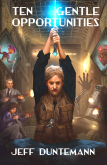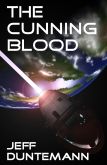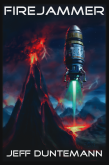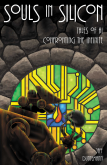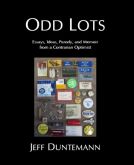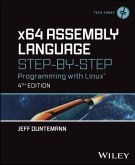I twisted my neck funny earlier this week, and since then have had intermittent neck pain and nearly constant back-of-the-head headaches. If you haven’t heard from me here, that’s mainly the reason. Things are better now, but this neck thing is a serious issue. It doesn’t take much to much to set it off, and alas, flying kites and looking at the stars have both been implicated.
The pain hasn’t allowed me to get much writing done this week, but I did decide to take a chance and do an early upgrade to Ubuntu 9.10, Karmic Koala. I usually let new major releases of OSes cook for a few weeks so that somebody else will spot the obvious bugs and fix them before I put my own arse in the line of fire. In this case, my neck hurt so bad that my arse didn’t care, and I said, Make it so, #2.
Others have complained of problems with 9.10, so I was gritting my teeth a little as the process proceeded. It took about three hours, but the install went without incident, as had upgrades to 9.04 and 8.10 previously. When nothing obvious blew up, I then spent a couple of hours just trying things: Showing videos, listening to MP3s, playing games, opening documents and spreadsheets, and so on. Having declared the upgrade good, I tried to run KGrubEditor…and realized that it was gone. Its icon was blank, and double-clicking on it did nothing. Apparently the upgrade from Jaunty to Karmic uninstalled KGrubEditor without asking me, leaving me an empty launcher on the desktop.
I thought this might have had something to do with Ubuntu’s moving from Grub to Grub 2 with the 9.10 release, but that’s true only for new installs: Upgrades to 9.10 leave Grub in place and only update menu.lst. So I don’t know why it happened, and I remain a little annoyed. Grub should already have a GUI settings manager/applet in the Administration menu; it shouldn’t be up to some guy to write an independent app to do the job. Editing menu.lst is one of the things I do so rarely that I don’t get good at it, which is precisely why GUI settings editors are necessary.
KGrubEditor is nowhere in the list of apps available through the Synaptic Package Manager, and when I tried to add the KDE4 PPA repository containing KGrubEditor, Synaptic could not access it for some reason. (It may have been an old URL; I’m not an ace at such things and don’t know how to be sure.) I eventually just went up and downloaded the damned thing manually and installed it, but the app can’t find its OS icons and doesn’t correctly set the default boot menu item. I guess I have to uninstall it and reinstall it, but I’ve killed enough time on it this weekend and will leave that task for later.
The takeaway is simple: As good as Ubuntu Linux is, it still has some gaping holes, and bootloader settings management is at the top of that regrettable list.


